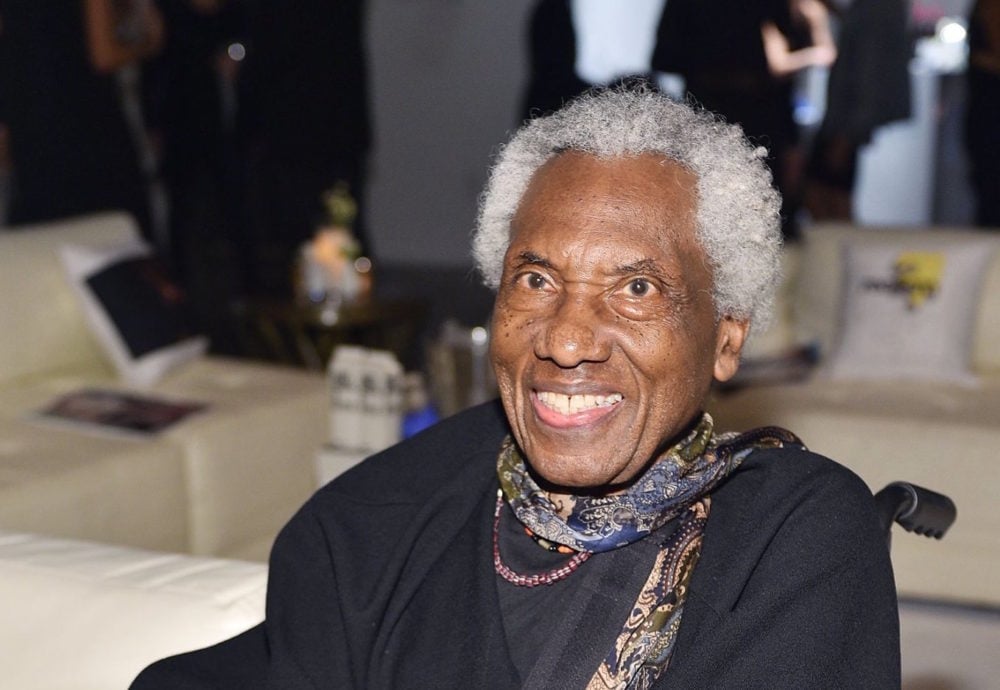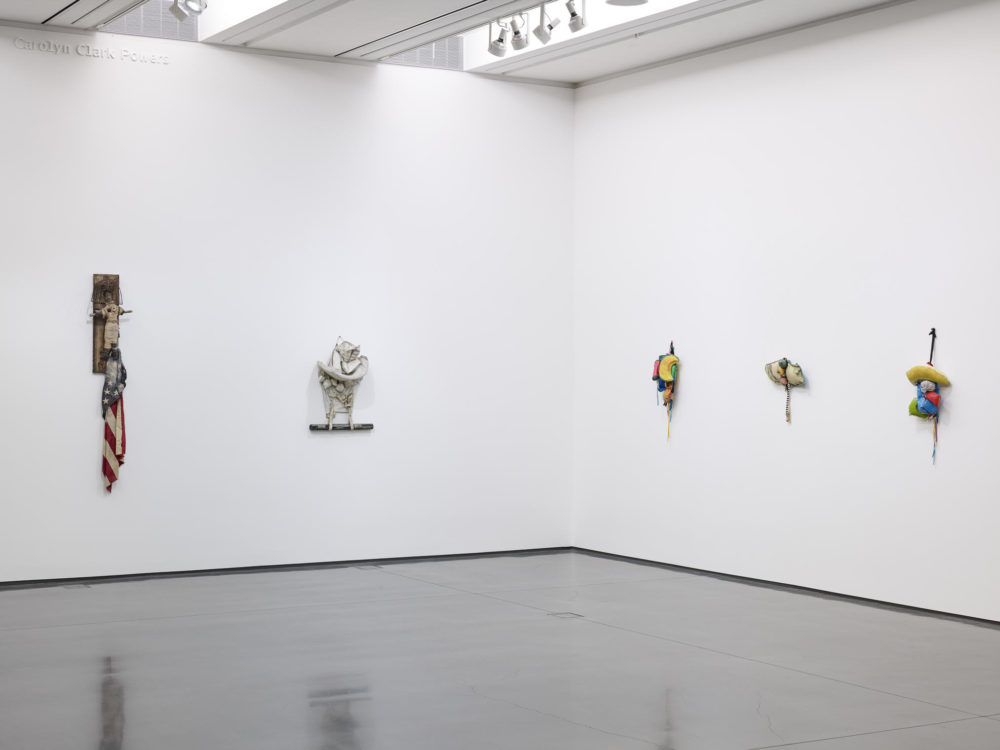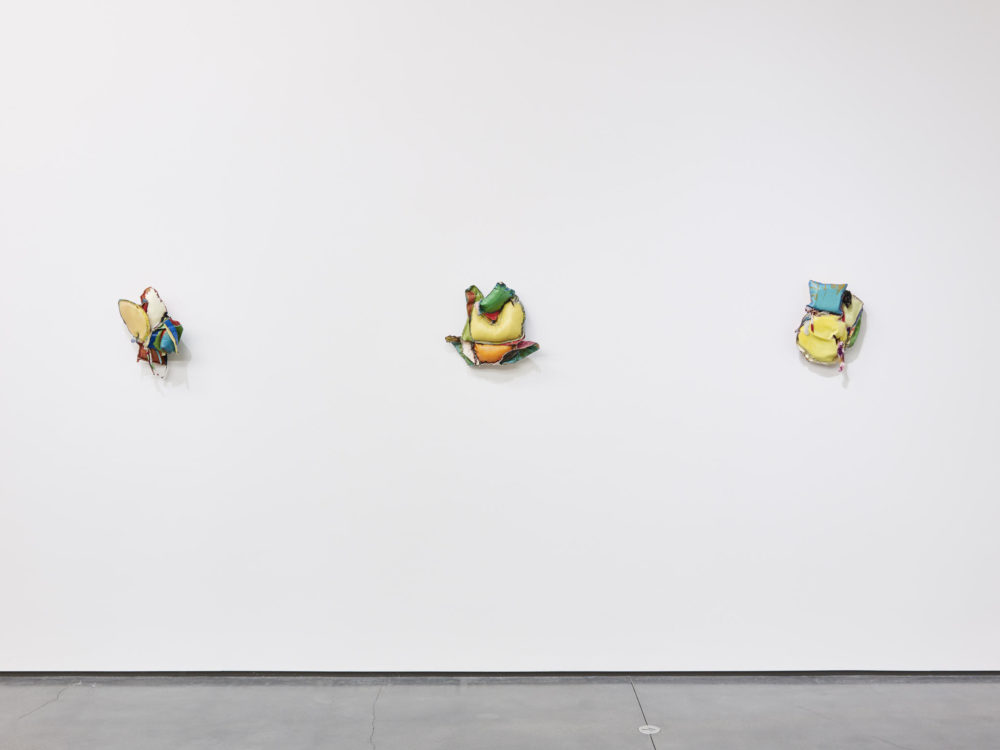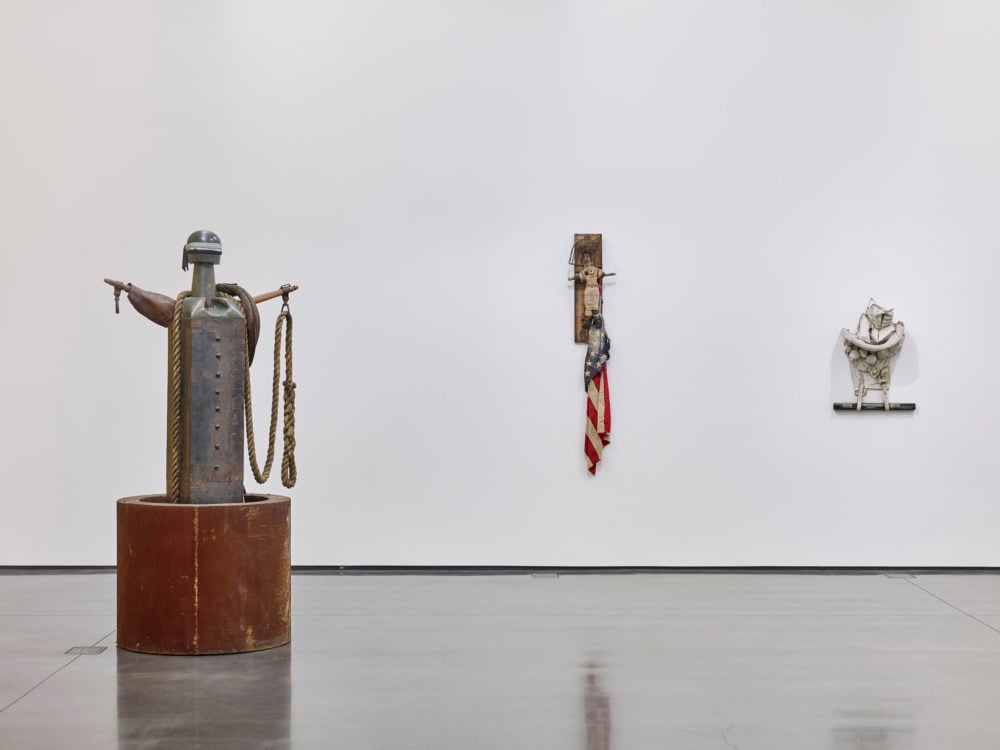On View
Why Artist John Outterbridge Is Key to the LA Art Scene
The activist and artist's work is on view in Aspen.

The activist and artist's work is on view in Aspen.

Henri Neuendorf

Rising from the Los Angeles assemblage movement in the 1960s, John Outterbridge’s deeply political artworks and political activism propelled him to the forefront of the city’s art scene.
Born in 1933 in Greenville, North Carolina, into the Depression-Era Jim Crow South, Outterbridge was confronted with culturally rich, yet segregated upbringing that defined his art and activism for the rest of his life.
He went on to study painting at the American Academy of Art in Chicago, before moving to Los Angeles in 1963. There, he adopted assemblage in concert with the movement practiced by African American contemporaries such as David Hammons, Josh Riddle and Noah Purifoy, but also more broadly aligned with the likes of Robert Rauschenberg and Ed Kienholz. The Watts riots of 1965—which exposed the inequalities of blacks and whites living in the inner city—embedded a deeply political undercurrent in the artist work which remains to this day.

Installation view John Outterbridge: Rag Man at the Aspen Art Museum. Photo: courtesy Aspen Art Museum.
At the Aspen Art Museum (AMM), a succinct and carefully curated survey of the artists work from the 1970s to present day explores his intricate found object assemblages. In a telephone interview with artnet News, AAM director Heidi Zuckerman addressed Outterbridge, his work, and the exhibition currently on view.
Tell us about the John Outterbridge show currently on view at the AAM.
This is an exhibition that was actually organized for Art + Practice [in Los Angeles], and I was there in January for the association of art museum directors meeting, and we did a visit to the space.
John Outterbridge is an artist who has been on my list to do a show with for a long time. This is a really succinct, not incredibly expansive, but beautifully-curated survey of work from the ’70s to the most recent work that he’s been making. He’s of a more advanced age, and I felt the timing was really vital in terms of where he is in his life, but also frankly because some of the topics that he’s addressing are relevant to our contemporary times.
Outterbridge has a very direct way of addressing social issues in his work. Would you agree with that assessment?
I would. I think that the idea of activist-artists and artist-activists is something that people have flirted with over time. I think people like Outterbridge, who have such profound integrity in terms of their practice and are able to have this duality where the artistry informs the activism and the activism informs the artistry, is pretty unique.

Installation view John Outterbridge: Rag Man at the Aspen Art Museum. Photo: courtesy Aspen Art Museum.
Can you go into more detail about Outterbridge’s activism?
I think most emblematic is his role as the director of the Watts Art Center for so many years. He has lived and worked in the community around where Art + Practice is since the ’60s. And from what I understand he’s a local hero. He first exhibited his first show in the same neighborhood at the very beginning of his career. So he’s an artist like Mark Bradford in many ways, who has been committed to his community and continued to invest both intellectually, and metaphorically, and financially in that same community over time.
To what extent do you think race informs Outterbridge’s work?
I never like to make assumptions about that. I think we all make life decisions based on who we are and what we know, and I think race is probably an inextricable part of who we are. But I can’t really speak on John’s behalf.
How does Outterbridge fit into the assemblage movement?
He’s one of the key members of the California assemblage movement. I think it’s so interesting how he talks about how his father was a rag man—which is the title of the exhibition, incidentally—and how he approached the idea of finding value and beauty in things that other people disregard. It’s not only a key insight into the work, but also a metaphorical insight into how he’s approached his life’s practice as well.

Installation view John Outterbridge: Rag Man at the Aspen Art Museum. Photo: courtesy Aspen Art Museum.
How do you estimate Outterbridge’s significant within the art historical context of Los Angeles?
I think he’s key to the Los Angeles artistic fabric; I think he’s a local hero. I think he existed and exists at the periphery of the commercial aspect of art. And I think that kind of integrity to that committed practice over such a long time is also emblematic of a Los Angles way of art making.
Why do you think he wasn’t really accepted by the market?
I mean, the work is tough. That’s one of the things I love about it. It’s an incredible reflection of our life and times, and people don’t always want to look at that.
Outterbridge’s work isn’t only political, it also has a strong aesthetic quality.
Certainly in the way that the objects are assembled and constructed there’s an attention to detail and care. Assemblage in the literal description of the word—an aspect of it is meditative.
How have people reacted to the show?
The show has been a revelation to many of our visitors, and I’ve had the fortune of taking some artists through yesterday. I took Julian Schnabel through two weeks ago, I took Richard Tuttle through, and they both were overwhelmed by the exhibition and really enjoyed it. When I told Julian that John’s father was a rag man, he laughed and said “mine was too.” I don’t know exactly what he meant, but we did talk about the idea of finding beauty in the things that others disregard. We’re actually doing an exhibition of Julian’s early plate paintings in November. Maybe people will make that metaphorical association between and time-travel between their two practices.
“John Outterbridge: Rag Man” is on view at the Aspen Art Museum, 637 East Hyman Avenue, Aspen, Colorado, July 1–October 16, 2016.